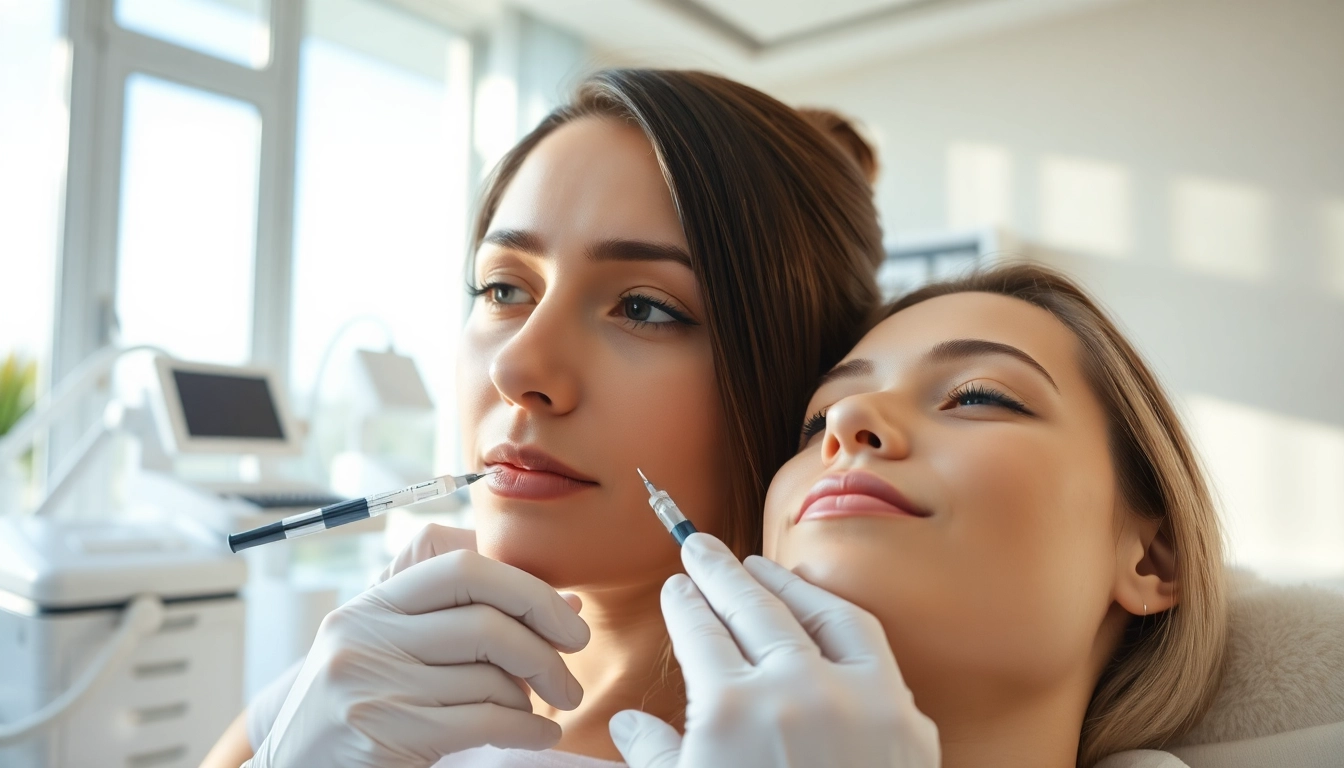Understanding Dermal Fillers: What They Are and How They Work
Dermal fillers have become increasingly popular in the realm of aesthetic enhancements, providing a non-surgical option for those looking to rejuvenate their appearance. These injectable substances are designed to restore volume to areas of the face, smooth out wrinkles, and enhance facial contours. By understanding the types of dermal fillers available and how they function, individuals can make informed decisions about their beauty and health choices. One of the most highly regarded resources for learning about dermal fillers is Beauty Health Med Spa, which offers a variety of services tailored to meet patient needs.
Types of Dermal Fillers Available
The landscape of dermal fillers is diverse, with several types available to cater to different aesthetic needs. Primarily, fillers can be categorized into the following types:
- Hyaluronic Acid Fillers: These are the most popular fillers, including brands like Juvederm and Restylane. Hyaluronic acid is a naturally occurring substance in the body, making these fillers safe and effective for restoring volume and hydration.
- Calcium Hydroxylapatite Fillers: Found in Radiesse, this thicker filler is used for deeper wrinkles and can stimulate collagen production.
- Poly-L-lactic Acid Fillers: Sculptra is a well-known product in this category, used to gradually restore fullness by stimulating the body’s own collagen production over time.
- Permanent Fillers: Options such as Bellafill provide long-lasting results but may come with a higher risk of complications.
- Autologous Fat Injections: Involves harvesting fat from the patient’s body and injecting it into facial areas, offering a biocompatible and long-lasting option.
How Dermal Fillers Enhance Facial Features
Dermal fillers work by filling in areas of volume loss, smoothing wrinkles, and enhancing contours, thus providing a fresh and youthful appearance. When injected beneath the skin, these fillers plump the tissues, effectively diminishing fine lines and deeper folds. Common areas treated with dermal fillers include:
- Cheeks: Adding volume to the cheeks can restore youthful contours.
- Nasolabial Folds: Smooths the lines that run from the sides of the nose to the corners of the mouth.
- Lips: Enhances fullness and shape for a more defined lip profile.
- Jawline: Filler can provide definition and contour to the jaw area.
Safety Considerations and FDA Approvals
While dermal fillers are generally considered safe, it’s essential to be aware of potential risks and ensure that the products used are FDA-approved. Allergies, infection, and dissatisfaction with results are common concerns. Before proceeding with treatments, patients should consult with a qualified provider who can explain the risks and benefits specific to their health history and cosmetic goals. It is advisable to verify that the practitioner is licensed and experienced in administering fillers.
Benefits of Using Dermal Fillers
Patients often choose dermal fillers for various reasons, ranging from aesthetic preferences to the desire for a more youthful appearance. The benefits are numerous and can significantly impact a person’s confidence and self-image.
Immediate Results and Minimal Downtime
One of the most appealing aspects of dermal fillers is the instant gratification they provide. Unlike surgical procedures that may involve extensive downtime, fillers can deliver immediate results, with many patients noticing improvements right after treatment. Swelling and bruising, if they occur, typically resolve within a few days, allowing individuals to quickly return to their daily activities.
Addressing Common Signs of Aging
As individuals age, the natural production of collagen and elastin declines, leading to signs of aging such as sagging skin, wrinkles, and volume loss. Dermal fillers effectively combat these signs by replenishing lost volume and providing hydration, thereby rejuvenating the skin. They can significantly improve the appearance of:
- Wrinkles: Fillers can soften the appearance of fine lines and deeper folds.
- Loss of Facial Volume: Areas such as cheeks and temples can be enhanced for a more youthful contour.
- Thin Lips: Fillers can restore fullness and enhance lip shape.
Versatility in Treatment Areas
Dermal fillers are not limited to one specific area of the face. They can enhance various features depending on individual needs. Their versatility allows for comprehensive treatment plans that can address multiple concerns in a single session, which is particularly appealing to those looking for efficient solutions to aging.
Preparing for Your Dermal Filler Treatment
Before undergoing a dermal filler treatment, preparation is key to achieving optimal results. A thorough understanding of the process can reduce anxiety and set realistic expectations.
Initial Consultation and Expectations
The first step in the journey is an initial consultation with an experienced practitioner. During this appointment, individuals can discuss their aesthetic goals, explore different options, and ask questions. The practitioner may also perform a facial analysis to determine the best treatment plan tailored to the individual’s needs and anatomy. Open communication about medical history and any concerns is essential for safety and satisfaction.
Pre-Treatment Guidelines to Follow
To ensure a smooth treatment and minimize side effects, practitioners often provide pre-treatment guidelines. These may include:
- Avoiding blood-thinning medications or supplements (like aspirin, ibuprofen, and vitamin E) at least one week prior to treatment.
- Staying hydrated and avoiding excessive alcohol consumption.
- Consulting with the provider about any skin concerns or active conditions in the treatment area.
Understanding the Procedure Steps
Once prepared, the treatment process typically involves the following steps:
- Application of a topical anesthetic to minimize discomfort.
- The practitioner meticulously injects the filler into targeted areas using fine needles.
- Post-injection massage to ensure even distribution of the filler.
- Assessment of results; any necessary adjustments can be made in the same session.
Post-Treatment Care for Optimal Results
After the treatment, proper care is essential to maintain results and minimize potential complications. Understanding aftercare can help ensure a positive experience.
Common Aftercare Instructions
Patients are often advised to follow specific aftercare guidelines, which may include:
- Avoiding strenuous exercise for 24 hours post-treatment to reduce swelling and bruising.
- Keeping the treated area clean and avoiding touching or massaging the site unnecessarily.
- Applying ice to reduce swelling and alleviate discomfort if needed.
Signs of Complications to Monitor
While complications are rare, it’s crucial to monitor for adverse effects. Patients should be aware of signs such as:
- Persistent swelling or bruising beyond a normal timeframe.
- Severe pain or discomfort at the injection site.
- Signs of infection, such as fever or pus.
When to Schedule Follow-Up Appointments
A follow-up appointment may be beneficial to evaluate the treatment results and discuss any concerns. Regular monitoring is essential, especially if additional treatments or touch-ups are required.
Long-Term Considerations and Trends in Dermal Fillers
Understanding the longevity and progression of dermal fillers can provide additional insights into their practicality as a cosmetic solution.
Duration of Results and Touch-Up Treatments
The duration of results from dermal fillers can vary based on the type of filler used, the area treated, and individual factors such as metabolism and skin type. Generally, results can last anywhere from six months to two years. Many patients return for touch-up treatments to maintain their results and ensure ongoing satisfaction with their appearance.
Emerging Technologies and Innovations in Fillers
The field of aesthetic medicine is continuously evolving. Recent innovations in filler formulations and techniques aim to enhance safety and effectiveness. For example, newer fillers may incorporate lidocaine for added comfort during injections or offer more natural-looking results through advanced compositions. Studying these innovations can inform patients making choices about their treatment options.
Real Patient Experiences and Testimonials
Consumer experiences provide valuable insights into the effectiveness and satisfaction associated with dermal fillers. Patients often report increased confidence and satisfaction following their treatments. Collecting and reviewing testimonials can also help prospective patients understand what to expect, overcoming common fears and hesitations regarding these procedures.



